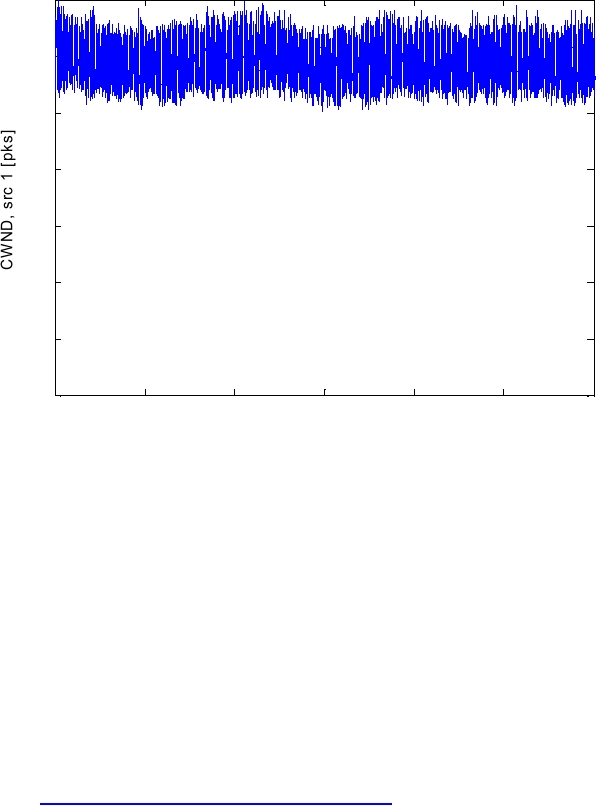350
300
250
200
150
100
50
0
100
150
200
250
300
350
400
time (s)
Figure 76: Experiments on WAN-in-Lab showing conditions under which FAST, which is normally
very stable, can be made to oscillate. The conditions for this were found using the recently-derived
model. Note that the oscillations are much smaller than those of most TCP variants.
Because of the simple signaling, MaxNet can also be used with a single bit of feedback per
packet, using a scheme called ADPM (adaptive deterministic packet marking), recently
developed at Caltech, the University of Melbourne, and the City University of Hong Kong Error!
Reference source not found.. Unlike most explicit congestion signaling schemes, ADPM is
compatible with standard ECN ("explicit congestion notification") signals.
As well as being applied to MaxNet, ADPM is currently being applied by researchers at the
University of Pittsburgh, in collaboration with Caltech, for an alternative congestion control
approach.
References
[1] George S. Lee, Lachlan L. H. Andrew, Ao Tang and Steven H. Low, "WAN-in-lab:
Motivation, Deployment and Experiments", n Proceedings of Protocols for Fast, Long
Distance Networks (PFLDnet), pp. 85-90. Marina Del Rey, CA, 7-9 Feb 2007. [online]
<http://netlab.caltech.edu/publications/PFLDnet07.pdf>
[2] C. Jin, D. X. Wei, S. H. Low, G. Buhrmaster, J. Bunn, D. H. Choe, R. L. A. Cottrell, J. C.
Doyle, W. Feng, O. Martin, H. Newman, F. Paganini, S. Ravot and S. Singh, "FAST
TCP: From Theory to Experiments", IEEE Network, 19(1):4-11, Jan/Feb 2005
[3] Ao Tang, Lachlan L. H. Andrew, Krister Jacobsson, Karl H. Johansson, Steven H. Low
and Håken Hjalmarsson, "Window Flow Control: Macroscopic Properties from
Microscopic Factors", in Proceedings of IEEE INFOCOM, Phoenix, AZ, Apr 2008
124

